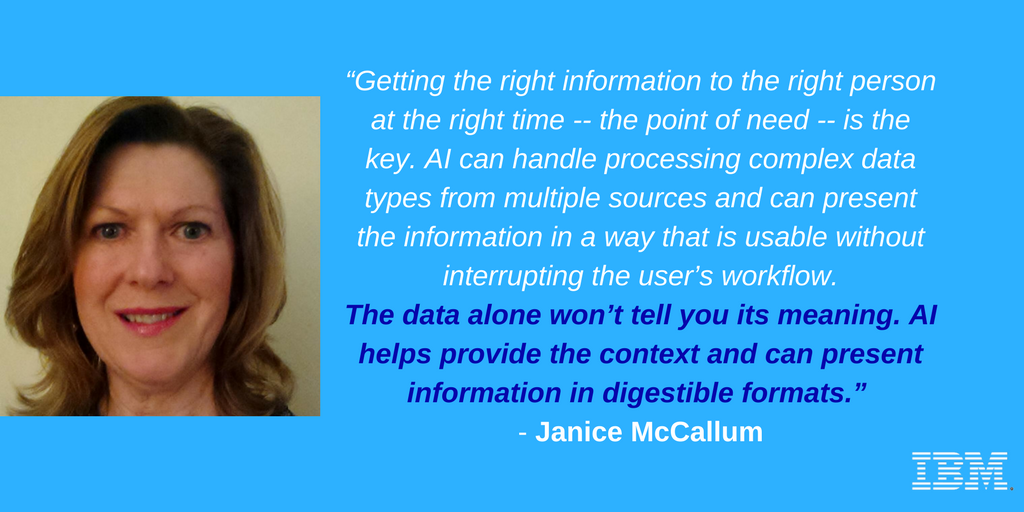Engaging Physicians Through Intelligent Workflow
 Tuesday, May 16, 2017 at 11:00AM
Tuesday, May 16, 2017 at 11:00AM Part I of my HIMSS17 commentary described how patient engagement applications have evolved into value-added patient workflow solutions. In this part II, the focus is on the emergence of an ecosystem that delivers integrated workflow solutions for physicians.
Ecosystems don’t arrive ready-made. As much as we wanted healthcare to vault over the development cycle that other industries followed in establishing enterprise resource planning (ERP) systems and other productivity platforms, we’ve found that healthcare has had to follow a similar path that begins with a fragmented group of limited-purpose billing, clinical, administrative, and patient-facing software systems and progresses toward platforms that connect information from multiple sources to enable more efficient workflow.
Once the foundational ecosystem is sufficiently established, value-added analytics can flourish and systems can be further tuned to improve utility, usability, and efficiency. Have we achieved success in delivering workflow systems that delight rather than deter physicians yet? Not quite, but at HIMSS17 there were good signs of progress in the foundational infrastructure, the building blocks and the interfaces that constitute a viable ecosystem.
Technology has delivered some amazing tools for mining insights from massive datasets by applying data science and cognitive computing methods. IBM Watson stands out in this area and IBM Watson Health was definitely in the spotlight at HIMSS17, given the opening keynote by IBM’s CEO, Ginni Rometty. But, we need to remain aware of the importance of a strong data foundation for the advanced applications. Data need to meet minimum levels of accuracy, normalization, timeliness and breadth. And, let’s not forget security and access control.

Debating Physician Engagement
A highlight for me at HIMSS17 was a brief debate with fellow social media ambassador Rasu Shrestha, MD, MBA, Chief Innovation Officer at UPMC. Our topic was “Physician Engagement” and the conversation quickly turned toward better design of products for physicians so that the product enhances productivity, with interfaces that delight rather than frustrate. The example of EHR development, which is viewed in retrospect as including too little input from intended users and almost no vision on how digital records could interact with other digital systems to dramatically improve productivity, sits in everyone’s mind as the wrong way to develop health IT software.
We weren’t able to solve the issue of the ideal product development process for health IT systems in our seven minute session (although I’d love to spend more time on this topic). However, the following takeaways relate well to other hot topics at HIMSS17.
Physicians as detectives
Rasu described the work of physicians as similar to detectives who search for clues and put the pieces together to come up with the best solution. EHRs and other installed health IT systems weren’t designed to solve this core functional need of physicians. Early clinical decision support (CDS) systems have existed alongside EHR/EMRs, but have only recently begun to be integrated into workflow.
Zynx Health, which was a pioneer in workflow software for creating order sets, is celebrating its 20thanniversary. They now work more closely with EHR vendors to integrate CDS and care plans into core workflow.[1]
It’s encouraging to see that in both consumer-facing apps and provider-focused health IT products the cluttered and disjointed landscape of health IT products and mobile apps is coalescing into a connected health IT ecosystem. But, it didn’t happen overnight. All the buzzwords from previous HIMSS conferences, including standards, interoperability, meaningful use of EHRs, data warehousing, data security, privacy, population health management, patient engagement, big data/data analytics, cloud computing and APIs have served as building blocks to get us to where we are today. AI and virtual reality systems may be awe-inspiring, but a sustainable ecosystem still needs a solid foundation built on best practices in data management, security and infrastructure.
Furthermore, the drudge work that Rasu describes in seeking clues from multiple systems and sources that often present repetitive navigation challenges is precisely the type of task suited to healthbots, as I described in my pre-HIMSS17 Industry Perspective article. Let’s offload the annoying, time-consuming drudge work to bots that perform these tasks better than humans and allow the physicians, researchers and other clinicians to focus on improving outcomes and providing better care.
[1] Note that Zynx Health’s sister company, FDB, known for its drug database, has introduced FDB Prizm, a master database for medical devices.
This article was orginally published by HIMSS on March 28, 2017 and can be found here: http://www.himss.org/news/part-ii-engaging-physicians-through-intelligent-workflow-solutions


